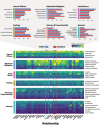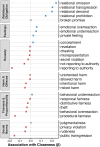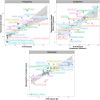A large-scale investigation of everyday moral dilemmas
- PMID: 40365160
- PMCID: PMC12070388
- DOI: 10.1093/pnasnexus/pgaf119
A large-scale investigation of everyday moral dilemmas
Abstract
Questions of right and wrong are central to daily life, yet scientific understanding of everyday moral dilemmas is limited. We conducted a data-driven analysis of these phenomena by combining state-of-the-art tools in machine learning with survey-based methods. We extracted and analyzed 369,161 descriptions ("posts") and 11 M evaluations ("comments") of dilemmas from the largest known online repository of everyday moral dilemmas: Reddit's "Am I the Asshole?" Users described a wide variety of everyday dilemmas on topics ranging from broken promises to privately held emotions. Dilemmas involving relational obligations were the most frequently reported, while those pertaining to honesty were the most frequently condemned. The types of dilemmas people experienced depended on the interpersonal closeness of the interactants, with some dilemmas (e.g. politeness) more prominent in distant-other interactions and others (e.g. relational transgressions) more prominent in close-other interactions. A preregistered follow-up investigation showed that similar dilemmas are reported in a census-stratified representative sample of the US population (n = 510). Overall, this paper highlights the diversity of moral dilemmas experienced in daily life and contributes to the development of a moral psychology grounded in the vagaries of everyday experience.
Keywords: closeness; dilemmas; harm; honesty; judgments; morality; relationships.
© The Author(s) 2025. Published by Oxford University Press on behalf of National Academy of Sciences.
Figures






References
-
- Sinnott-Armstrong W. Moral dilemmas. Vol. 39 240. Blackwell, New York, NY, 1988.
-
- Demaree-Cotton J, Guy K. 2025. Moral dilemmas. In: Robbins P, Malle B, editors. The Cambridge handbook of moral psychology. Cambridge (UK): Cambridge University Press. p. 101–123.
-
- Ford RC, Richardson WD. 1994. Ethical decision making: a review of the empirical literature. J Bus Ethics. 13:205–221.
-
- Haidt J. 2007. The new synthesis in moral psychology. Science. 316:998–1002. - PubMed
LinkOut - more resources
Full Text Sources

